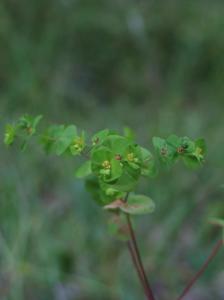There are a few flowering plants that wait till the end of the summer before flowering, and Autumn Ladies-tresses (Spiranthes spiralis) is one of them, never flowering before August and continuing well into September. This is probably the least conspicuous of the orchids which are found in the Bristol area, typically only reaching about ten centimetres tall. The photos below show the way in which the tiny flowers spiral around the stem, a feature reflected in its scientific name.
 |
 |
I visited the colony on Bristol Downs today, and counted at least 87 plants – although among these were many which weren’t in full flower yet, which I only noticed when I was on my knees next to plants which were in flower, so as I will have no doubt missed other similar individuals, I’m confident the total population here is well into three figures.
Here’s the location: right next to the circular road which runs around the Downs.
Autumn Ladies-tresses is a plant of very nutrient-poor limestone and chalk grassland. In most locations, sheep do the work of keeping the habitat conditions right; on the Downs, in the absence of sheep, the grassland has to be managed by mowing and raking off the cuttings. On the side of the colony closest to the road, the soil has been badly eroded by runners; fences have been erected to encourage people off of this part of the site, in the hope that it will regenerate.
The Downs as a whole are a bit of a curate’s egg botanically, even if you discount the areas which are formally set aside for sports. Although it is certainly the largest area of limestone grassland around Bristol until you reach the Mendips and Cotswolds, that doesn’t necessarily mean it’s good-quality limestone grassland throughout. Some areas are good – I found a few Harebells (Campanula rotundifolia) growing in another spot today, for example – and the stone workings on the southeast side have some botanical interest, as does the area around the observatory. However, other parts are quite species-poor. With the right management to reduce the nutrient levels, though, the Downs could certainly become a lot richer, and complement their neighbour the Avon Gorge.

